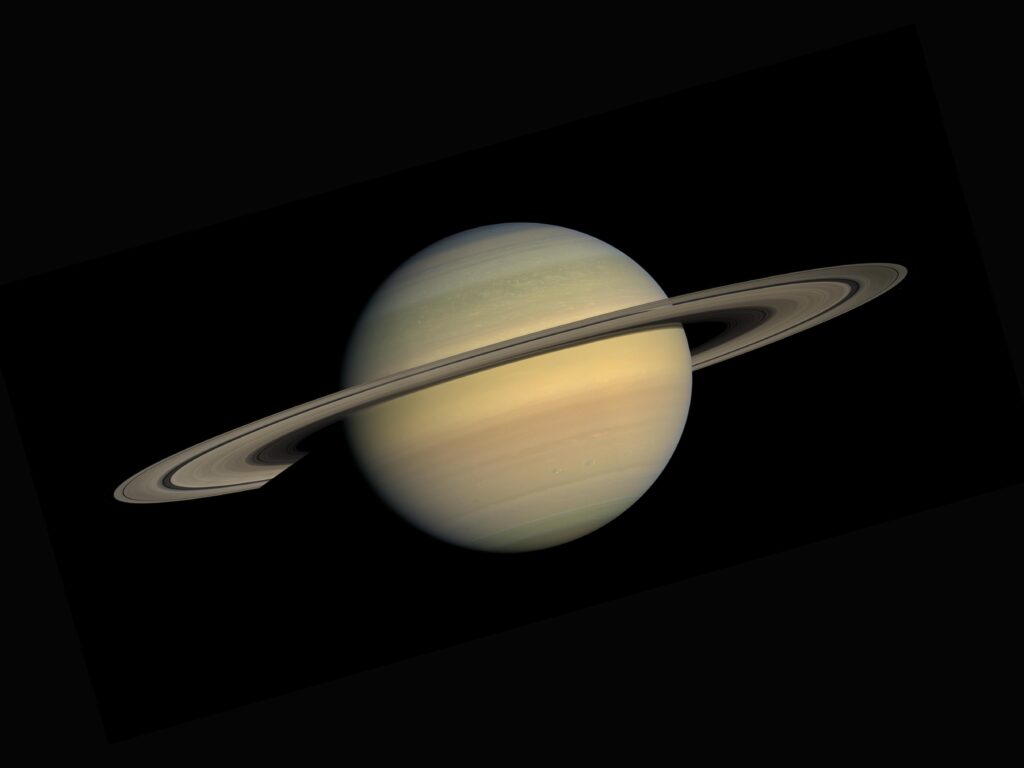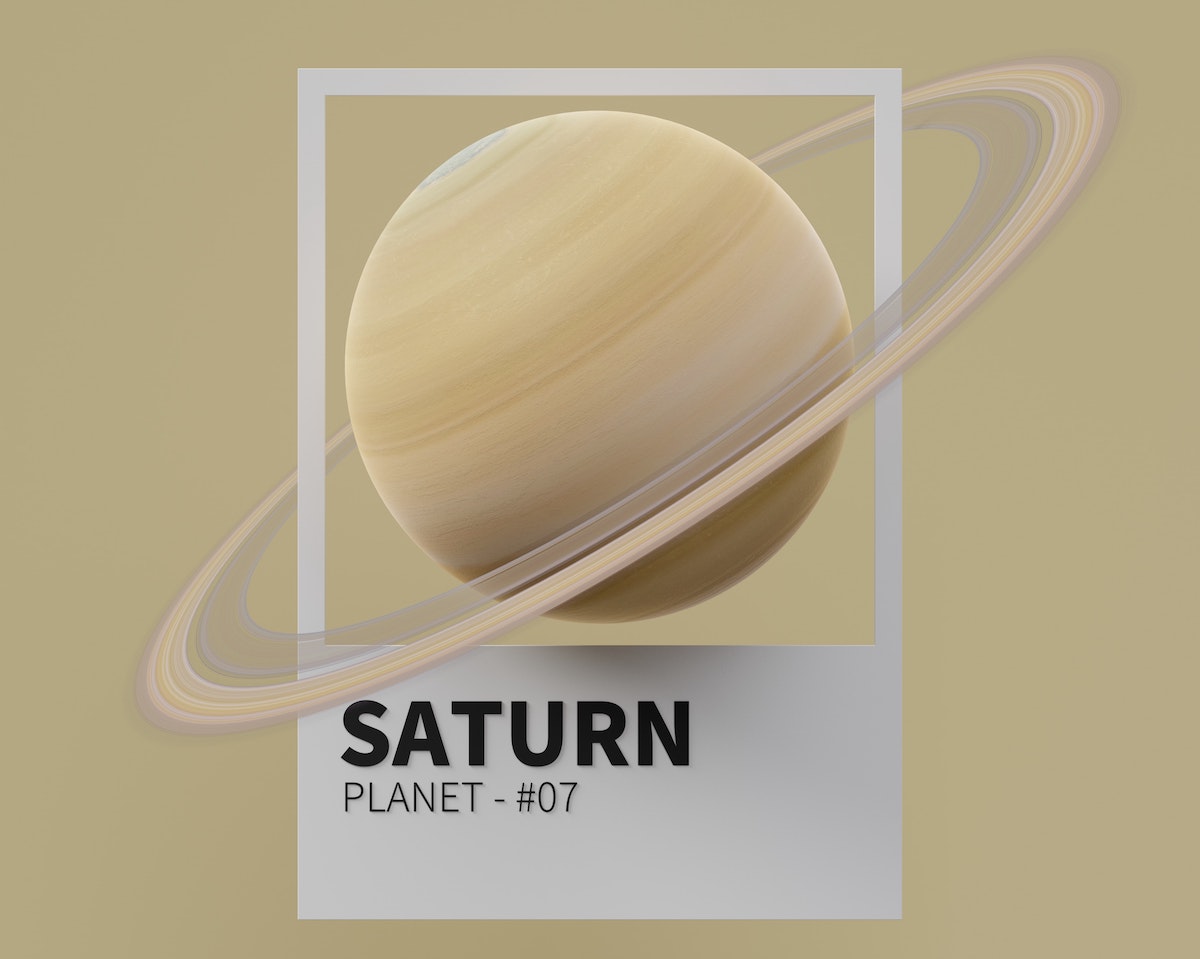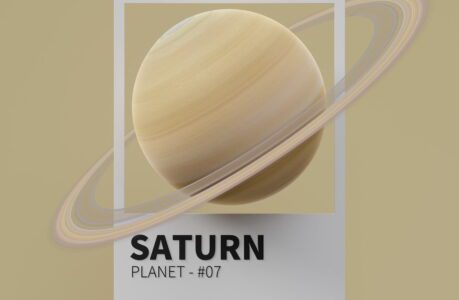Saturn, the sixth planet from the sun and one of the largest and most beautiful planets in the solar system, has always been a fascinating subject for astronomers and stargazers alike. With its iconic rings, numerous moons, and distinctive shape, Saturn has captured the imagination of people for centuries. In this article, we will explore Saturn’s unique features, and how you can see it from Ireland.
Saturn is a gas giant planet, with a diameter of about 120,000 km and a mass that is 95 times that of Earth. The planet’s most recognizable feature is its bright and extensive ring system, which is made up of thousands of individual ice particles, dust, and rock fragments. The rings are about 270,000 km in diameter and about 1 km thick, and they are one of the largest and most beautiful structures in the solar system.
Another remarkable feature of Saturn is its numerous moons. With a total of 82 moons, Saturn has the largest number of moons in the solar system, and many of them have their own unique features, including strange shapes, large craters, and icy surfaces. Some of the most famous moons of Saturn include Titan, the largest moon in the solar system, and Enceladus, which is famous for its geysers of water ice.

So, how can you see Saturn from Ireland? The best time to observe Saturn is in the summer months, when the planet is visible in the night sky for longer periods. To see Saturn, you will need a telescope with a minimum aperture of 80mm, and a magnification of at least 50x. With these tools, you will be able to see the planet’s distinctive shape, its bright ring system, and some of its moons.
Additionally, there are several astronomy clubs and events in Ireland where you can go to observe Saturn and other celestial wonders. These events are great opportunities to learn more about the planet and its features, as well as to network with other stargazers and astronomers.
In conclusion, Saturn is a celestial wonder that is definitely worth observing. With its distinctive shape, beautiful ring system, and numerous moons, it is a fascinating planet that has captured the imagination of people for centuries. So why not grab your telescope, head outside on a clear summer night, and marvel at this celestial wonder.
What equipment do I need to see saturn’s rings
To see the rings of Saturn, you will need a telescope with a minimum aperture of 80mm and a magnification of at least 50x. A larger aperture and higher magnification will provide a clearer view of the planet and its ring system. You may also want to invest in a tripod to stabilise your telescope, as well as a good quality eyepiece that provides a wide field of view. A computerised telescope or a go-to mount is also helpful in finding Saturn in the night sky. Additionally, you may want to consider purchasing a star chart or planetarium software to help you locate the planet and other celestial objects. With these tools, you will be able to see the rings of Saturn in detail, and marvel at this beautiful celestial wonder.
What features should I look for on saturn
When observing Saturn, there are several features that you should look for:
The Ring System
The most recognizable feature of Saturn is its bright and extensive ring system. The rings are made up of thousands of individual ice particles, dust, and rock fragments, and they are about 270,000 km in diameter and about 1 km thick. With a telescope and good viewing conditions, you should be able to see the bright and distinct outline of the ring system.

The Planet’s Shape
Saturn is a gas giant planet, with a diameter of about 120,000 km and a mass that is 95 times that of Earth. When observing the planet, you should look for its distinctive shape, including its flattened appearance due to its rapid rotation.
Moons
Saturn has 82 moons, the largest number of moons in the solar system. With a telescope and high magnification, you may be able to see some of the planet’s largest moons, including Titan, the largest moon in the solar system, and Enceladus, which is famous for its geysers of water ice.
Atmospheric Features
Saturn has a complex and dynamic atmosphere, with cloud formations, storms, and other weather patterns. With a high-powered telescope, you may be able to see some of these atmospheric features, including the planet’s polar hexagonal storm, and its distinctive atmospheric bands.
By observing these features on Saturn, you will be able to appreciate the beauty and complexity of this celestial wonder. With clear skies and good viewing conditions, Saturn is an excellent target for stargazers and amateur astronomers.

